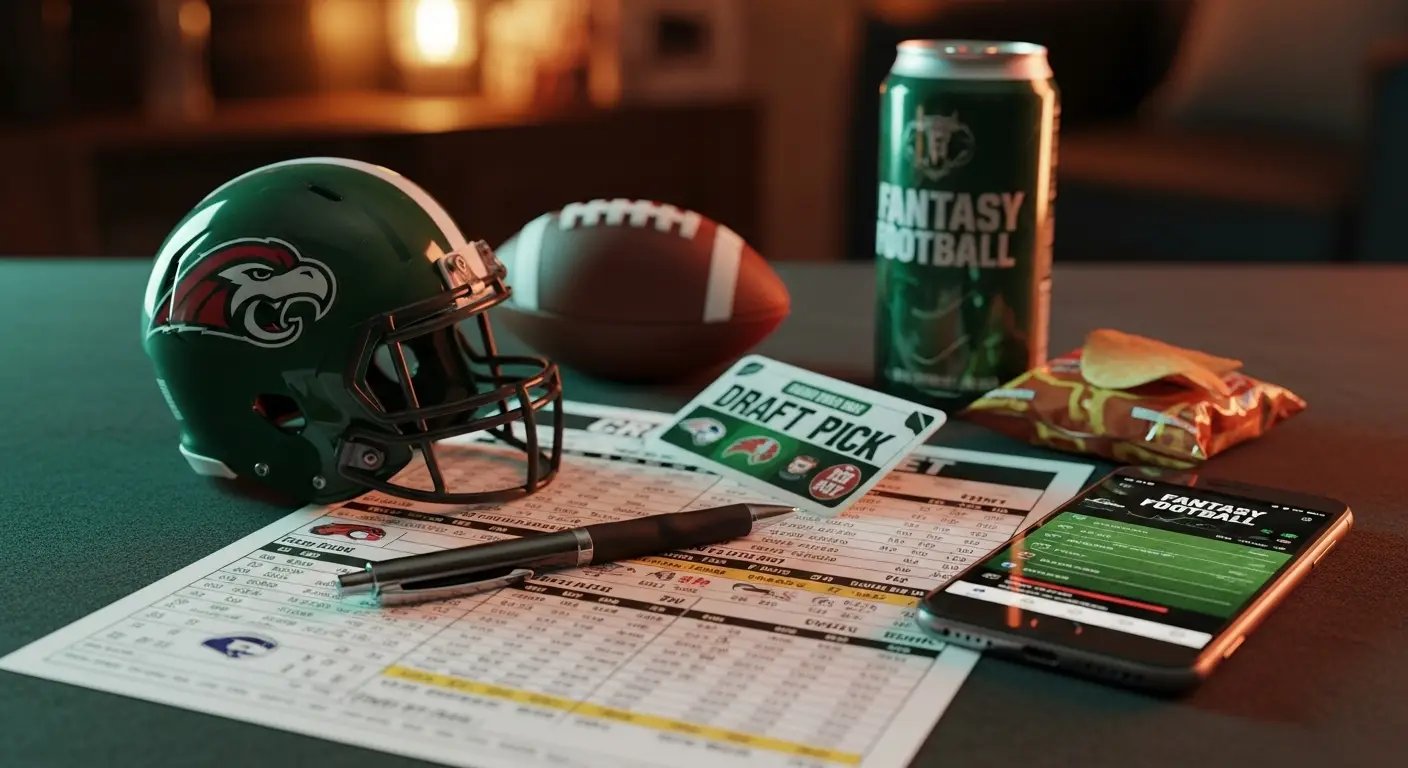Fantasy football is one of the most thrilling and competitive activities for sports enthusiasts. Whether you’re a seasoned player or just starting, creating a solid strategy is key to winning your fantasy football league. To help you dominate your league, we’ve compiled a comprehensive fantasy football cheat sheet that covers all the essential tips, strategies, player rankings, and more.
What Is a Fantasy Football Cheat Sheet?
A fantasy football cheat sheet is a tool that fantasy football players use to gain an edge in their league by helping them make informed decisions during their draft and throughout the season. It contains rankings, stats, analysis, and recommended strategies that are designed to streamline your decisions. Think of it as your playbook, guiding you from draft day to the playoffs.
If you’ve played fantasy football before, you know how overwhelming the entire process can be. From the never-ending pool of players to the constant strategy shifts, having a cheat sheet at your disposal can make the difference between being a casual participant and a league champion.
Why You Need a Fantasy Football Cheat Sheet
Fantasy football leagues can vary in format, scoring rules, and the number of participants. But no matter the league setup, everyone wants to maximize their chances of winning. A well-structured cheat sheet provides a quick reference to help you decide which players to pick, which to avoid, and how to structure your team for success.
Here are a few reasons why a cheat sheet is essential:
- Time Saver: Instead of manually researching every player during your draft, you’ll have quick access to all the critical data you need.
- Better Decision-Making: The cheat sheet includes rankings and analysis that account for various factors like performance, injuries, and team dynamics.
- Helps Manage Your Team: Throughout the season, you can use the cheat sheet for quick updates, such as player injuries, trade values, and waiver wire recommendations.
Key Components of a Fantasy Football Cheat Sheet
To be effective, a fantasy football cheat sheet must include the following:
- Player Rankings: These are generally listed by position and include the best available players for your team. Rankings are often updated based on player performance and injuries.
- Draft Tiers: Organizing players into tiers helps you focus on a specific group of players at different points in the draft.
- Sleepers and Busts: A sleeper is a player who might exceed expectations, and a bust is someone who is likely to underperform based on their draft position.
- Injury Updates: A good cheat sheet includes real-time injury updates, as these can significantly impact a player’s fantasy value.
- Position Analysis: Detailed stats on quarterbacks, running backs, wide receivers, tight ends, kickers, and defenses to help you make informed choices.
How to Use Your Fantasy Football Cheat Sheet
Using a cheat sheet isn’t just about having it open in front of you during the draft. It’s about understanding how to maximize its potential throughout the season. Here’s how you can use it effectively:
1. Draft Preparation
The first step in using your cheat sheet is preparing for your draft. A typical fantasy football draft will require you to select players for each position, but some formats may require specific roster spots like kickers or defenses. Here’s how to use the cheat sheet during the draft:
- Identify the Best Players: Your cheat sheet will highlight the top players for each position. Focus on the top-ranked players in the early rounds.
- Consider Tiers, Not Just Rankings: Ranking systems are great, but tiered rankings help you see the difference in talent. Once a tier runs out, it’s a good time to look for other players in the same tier.
- Watch for Sleepers and Avoid Busts: Don’t be afraid to take a risk on a sleeper, but be cautious about players who are likely to underperform based on their current situation.
2. In-Season Management
Your fantasy football cheat sheet isn’t just for the draft. It’s also a valuable tool throughout the season. Here’s how to keep using it after draft day:
- Waiver Wire Updates: Every week, your cheat sheet should be updated with recommendations on which players to add or drop based on performance.
- Trade Analysis: Use your cheat sheet to analyze trade opportunities. The cheat sheet should help you assess whether a trade benefits you, especially if it involves players of different positions or values.
- Player Injuries: Injuries are a part of the game, but your cheat sheet should include information on player injuries so you can make adjustments to your lineup accordingly.
Player Rankings for Fantasy Football
When you’re drafting players for your fantasy football team, rankings are one of the most important components of your cheat sheet. Here’s a look at how to prioritize different positions during your draft:
Quarterbacks (QBs)
The quarterback position can be critical, but it’s also deep with talent. A top-tier QB can be a game-changer, but there are many quarterbacks who can be had in the middle rounds who are still great performers.
Top-Tier QB (Round 1-2):
- Patrick Mahomes (Kansas City Chiefs)
- Josh Allen (Buffalo Bills)
- Jalen Hurts (Philadelphia Eagles)
Mid-Tier QB (Round 5-7):
- Trevor Lawrence (Jacksonville Jaguars)
- Dak Prescott (Dallas Cowboys)
- Geno Smith (Seattle Seahawks)
Running Backs (RBs)
Running backs are often the most valuable players in fantasy football because they provide a good mix of consistency and scoring potential. Focus on running backs in the early rounds, especially those who are the primary ball carriers for their teams.
Top-Tier RB (Round 1-2):
- Christian McCaffrey (San Francisco 49ers)
- Austin Ekeler (Los Angeles Chargers)
- Derrick Henry (Tennessee Titans)
Mid-Tier RB (Round 3-5):
- Travis Etienne (Jacksonville Jaguars)
- Joe Mixon (Cincinnati Bengals)
- Miles Sanders (Carolina Panthers)
Wide Receivers (WRs)
Wide receivers have become even more important in fantasy football, as many leagues reward points for receptions. Always aim for a top-tier receiver if possible, but be prepared to find value in later rounds.
Top-Tier WR (Round 1-2):
- Tyreek Hill (Miami Dolphins)
- Cooper Kupp (Los Angeles Rams)
- Stefon Diggs (Buffalo Bills)
Mid-Tier WR (Round 4-6):
- Chris Godwin (Tampa Bay Buccaneers)
- DeAndre Hopkins (Tennessee Titans)
- Jerry Jeudy (Denver Broncos)
Tight Ends (TEs)
Tight ends can be tricky to draft, as the position tends to have a big drop-off after the first few players. It’s often worth drafting one early if the value is right.
Top-Tier TE (Round 2-4):
- Travis Kelce (Kansas City Chiefs)
- George Kittle (San Francisco 49ers)
- Mark Andrews (Baltimore Ravens)
Kickers (K)
Kickers aren’t typically a major focus in most drafts, but a reliable kicker can help you in close matchups.
Top Kicker (Round 14-16):
- Justin Tucker (Baltimore Ravens)
- Harrison Butker (Kansas City Chiefs)
Defense/Special Teams (DST)
Like kickers, defenses often get picked in the final rounds, but a top-tier defense can help you win those low-scoring games.
Top Defense (Round 14-16):
- San Francisco 49ers
- Dallas Cowboys
Additional Tips for Fantasy Football Success
- Pay Attention to Bye Weeks: During the draft, be mindful of when key players have their bye weeks. This will help prevent lineup issues later in the season.
- Monitor the Waiver Wire: Be active in picking up free agents from the waiver wire. Players can emerge as hidden gems throughout the season.
- Trade Smartly: Don’t be afraid to make trades, but always keep an eye on the long-term value of each trade. Use your cheat sheet to assess trade value.
Common Mistakes to Avoid
Even with a solid cheat sheet, there are common mistakes that many fantasy football managers make. Here are a few to avoid:
- Overvaluing Kickers and Defenses: Both positions are important, but they should not be drafted too early. Focus on skill positions.
- Ignoring the Injury Report: Injuries are inevitable, but ignoring them can cost you. Make sure you check injury reports regularly.
- Drafting for Your Favorite Team: Personal biases can cloud your judgment. Always aim for the best player available based on value and fit.
- Sticking Too Rigidly to Rankings: While rankings are a helpful guide, they shouldn’t be followed blindly. Be flexible and adjust based on the flow of the draft.
Conclusion
A fantasy football cheat sheet is an indispensable tool for any serious player. It helps streamline your decision-making, making your fantasy football experience more enjoyable and competitive. By understanding how to use a cheat sheet, how to prioritize players, and what mistakes to avoid, you’ll be in a much better position to dominate your league. The ultimate goal is to have fun, but having the right strategy in place can make all the difference when it comes to winning your fantasy football league.
Source: https://revotechnologies.org/







